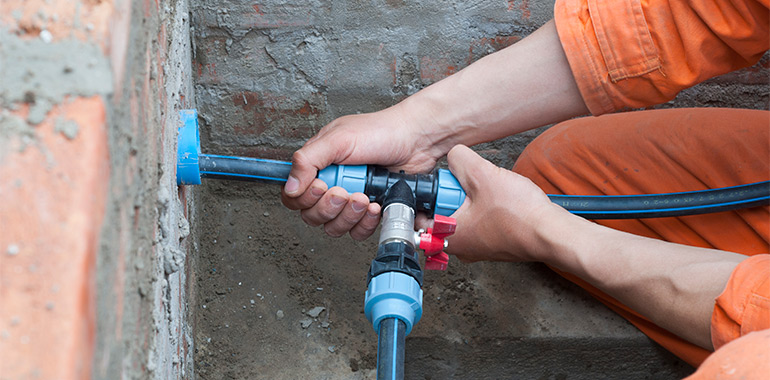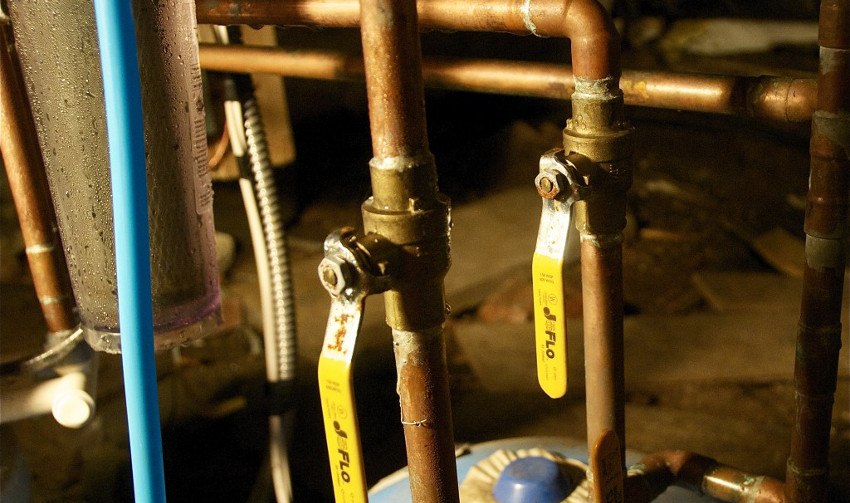Presented here down the page you might get a good deal of brilliant information with regards to Why is My Home Making Strange Plumbing Noises.

To diagnose noisy plumbing, it is necessary to figure out initial whether the undesirable noises occur on the system's inlet side-in other words, when water is transformed on-or on the drainpipe side. Noises on the inlet side have differed reasons: extreme water pressure, used shutoff and also tap parts, improperly attached pumps or various other home appliances, incorrectly positioned pipeline fasteners, and also plumbing runs consisting of a lot of limited bends or other restrictions. Noises on the drainpipe side generally come from bad location or, as with some inlet side sound, a design including tight bends.
Hissing
Hissing sound that occurs when a faucet is opened a little typically signals excessive water stress. Consult your regional public utility if you presume this problem; it will certainly be able to tell you the water stress in your location as well as can mount a pressurereducing valve on the inbound supply of water pipe if essential.
Various Other Inlet Side Noises
Creaking, squealing, scraping, snapping, and also tapping generally are triggered by the expansion or tightening of pipelines, typically copper ones providing warm water. The sounds take place as the pipes slide versus loosened fasteners or strike close-by residence framework. You can often identify the location of the issue if the pipelines are subjected; simply follow the audio when the pipes are making sounds. Probably you will find a loosened pipe wall mount or an area where pipes exist so close to flooring joists or various other framing items that they clatter against them. Attaching foam pipe insulation around the pipelines at the point of contact must correct the problem. Make sure straps as well as wall mounts are protected and also offer appropriate support. Where feasible, pipe fasteners must be affixed to huge architectural components such as foundation walls as opposed to to framing; doing so reduces the transmission of vibrations from plumbing to surfaces that can magnify and also move them. If attaching fasteners to framework is unavoidable, cover pipelines with insulation or other durable product where they speak to fasteners, as well as sandwich completions of brand-new bolts between rubber washers when installing them.
Remedying plumbing runs that deal with flow-restricting tight or various bends is a last hope that needs to be embarked on just after getting in touch with a knowledgeable plumbing service provider. Unfortunately, this situation is fairly typical in older homes that might not have actually been constructed with interior plumbing or that have actually seen a number of remodels, particularly by beginners.
Babbling or Shrilling
Extreme chattering or shrilling that takes place when a shutoff or tap is activated, which usually disappears when the fitting is opened completely, signals loosened or faulty interior parts. The service is to replace the shutoff or tap with a brand-new one.
Pumps and also appliances such as washing devices as well as dish washers can move electric motor sound to pipelines if they are improperly connected. Link such items to plumbing with plastic or rubber hoses-never rigid pipe-to isolate them.
Drainpipe Noise
On the drain side of plumbing, the chief goals are to remove surface areas that can be struck by falling or rushing water and to insulate pipes to contain unavoidable sounds.
In new construction, bathtubs, shower stalls, toilets, as well as wallmounted sinks as well as containers must be set on or versus durable underlayments to decrease the transmission of noise with them. Water-saving toilets and faucets are less loud than standard designs; install them instead of older types even if codes in your location still permit using older fixtures.
Drains that do not run vertically to the basement or that branch right into straight pipe runs supported at floor joists or other mounting present specifically bothersome noise troubles. Such pipelines are big enough to emit significant vibration; they additionally bring substantial quantities of water, which makes the scenario even worse. In new building and construction, define cast-iron soil pipelines (the big pipes that drain pipes bathrooms) if you can manage them. Their massiveness has a lot of the noise made by water travelling through them. Likewise, avoid transmitting drainpipes in wall surfaces shown bedrooms and also rooms where individuals collect. Wall surfaces containing drains ought to be soundproofed as was defined earlier, making use of dual panels of sound-insulating fiberboard as well as wallboard. Pipes themselves can be covered with special fiberglass insulation created the objective; such pipes have a resistant vinyl skin (occasionally including lead). Outcomes are not always sufficient.
Thudding
Thudding noise, usually accompanied by trembling pipelines, when a faucet or device valve is turned off is a problem called water hammer. The noise as well as resonance are caused by the resounding wave of pressure in the water, which instantly has no place to go. Occasionally opening a shutoff that discharges water promptly into an area of piping containing a constraint, elbow joint, or tee installation can produce the very same condition.
Water hammer can generally be cured by mounting fittings called air chambers or shock absorbers in the plumbing to which the issue valves or faucets are linked. These tools enable the shock wave developed by the halted flow of water to dissipate airborne they contain, which (unlike water) is compressible.
Older plumbing systems might have brief vertical areas of capped pipe behind walls on tap competes the same function; these can at some point fill with water, decreasing or damaging their performance. The cure is to drain the water supply entirely by shutting off the main supply of water shutoff and opening all taps. After that open up the main supply valve as well as shut the taps individually, starting with the faucet nearest the valve as well as ending with the one farthest away.
WHY IS MY PLUMBING MAKING SO MUCH NOISE?
This noise indeed sounds like someone is banging a hammer against your pipes! It happens when a faucet is opened, allowed to run for a bit, then quickly shut — causing the rushing water to slam against the shut-off valve.
To remedy this, you’ll need to check and refill your air chamber. Air chambers are filled with — you guessed it — air and help absorb the shock of moving water (that comes to a sudden stop). Over time, these chambers can fill with water, making them less effective.
You’ll want to turn off your home’s water supply, then open ALL faucets (from the bathroom sink to outdoor hose bib) to drain your pipes. Then, turn the water back on and hopefully the noise stops! If you’re still hearing the sound, give us a call to examine further.
Whistles
Whistling sounds can be frustrating, as sometimes the source isn’t easily identified. However, if you can pinpoint which faucet or valve that may be the cause, you’ll likely encounter a worn gasket or washer — an easy fix if you replace the worn parts!Whistling sounds from elsewhere can mean a number of things — from high water pressure to mineral deposits. Your best plan of attack here is to give our plumbing experts a call. We’ll be able to determine where the noise is coming from and what the cause may be, then recommend an effective fix!
Cracks or Ticks
Cracking or ticking typically comes from hot water going through cold, copper pipes. This causes the copper to expand resulting in a cracking or ticking sound. Once the pipes stop expanding, the noise should stop as well.
Pro tip: you may want to lower the temperature of your water heater to see if that helps lessen the sound, or wrapping the pipe in insulation can also help muffle the noise.
Bangs
Bangs typically come from water pressure that’s too high. To test for high water pressure, get a pressure gauge and attach it to your faucet. Water pressure should be no higher than 80 psi (pounds per square inch) and also no lower than 40 psi. If you find a number greater than 80 psi, then you’ve found your problem!
Next step is to give us a call in order to install a pressure regulator. Trust us, you don’t want to wait to resolve this issue. Not only is the sound annoying, but high water pressure can be destructive to your home — including damaging certain appliances, like your washer and dishwasher.
Dripping
You might be accustom to the slow quiet drip your kitchen faucet makes. You might have even tuned out your bathroom sink dripping and drabbing all day long — but it’s time to find its cause.
A slow drip could signify a variety of easy to fix issues, such as a worn out O ring, or loose part. And by ignoring the drip, you could be wasting up to 2,000 gallons of water a year! So start conserving water — get it looked at ASAP.
https://www.pwessig.com/blog/2018/december/why-is-my-plumbing-making-so-much-noise-/

I'm very fascinated by How To Fix Noisy Pipes and I'm hoping you enjoyed reading my blog post. You should set aside a second to distribute this post if you appreciated it. Thanks a lot for going through it.
Schedule Appointment
Comments on “Determining And Dealing With Plumbing Noises In Your House”